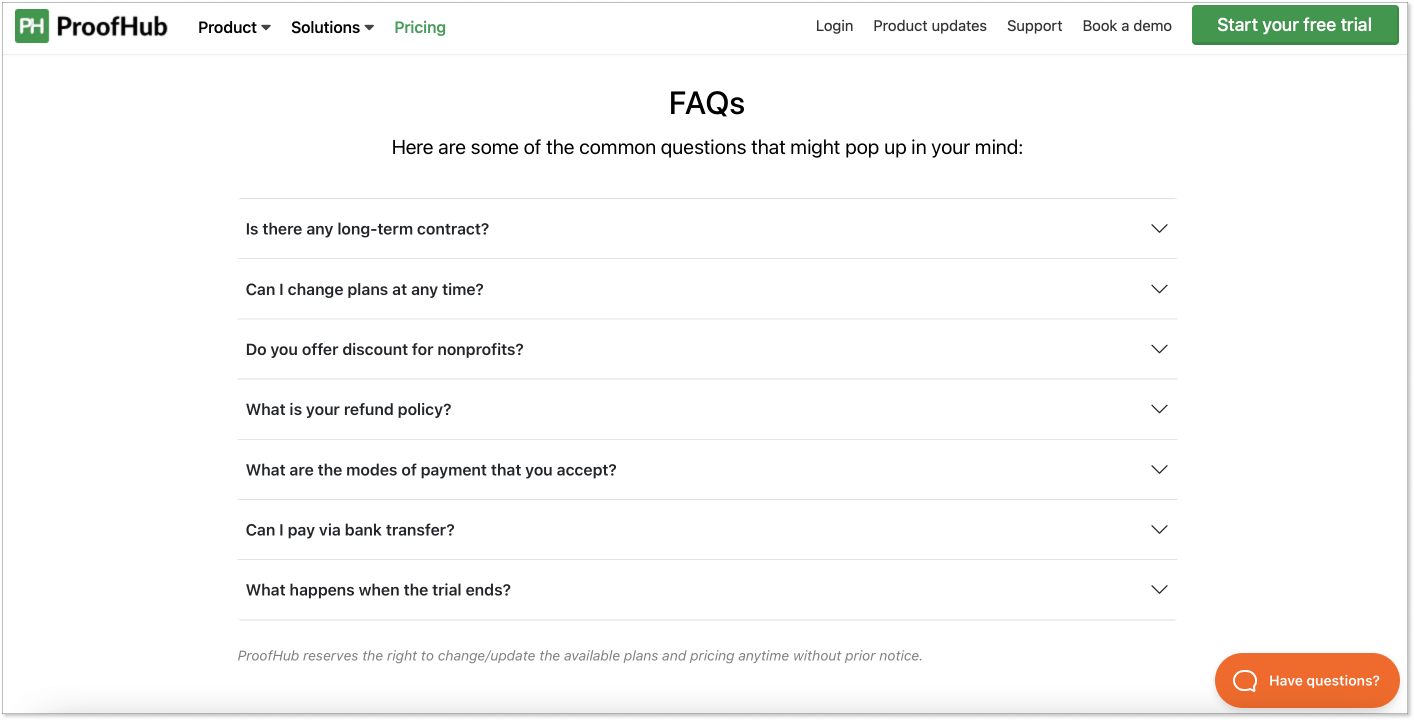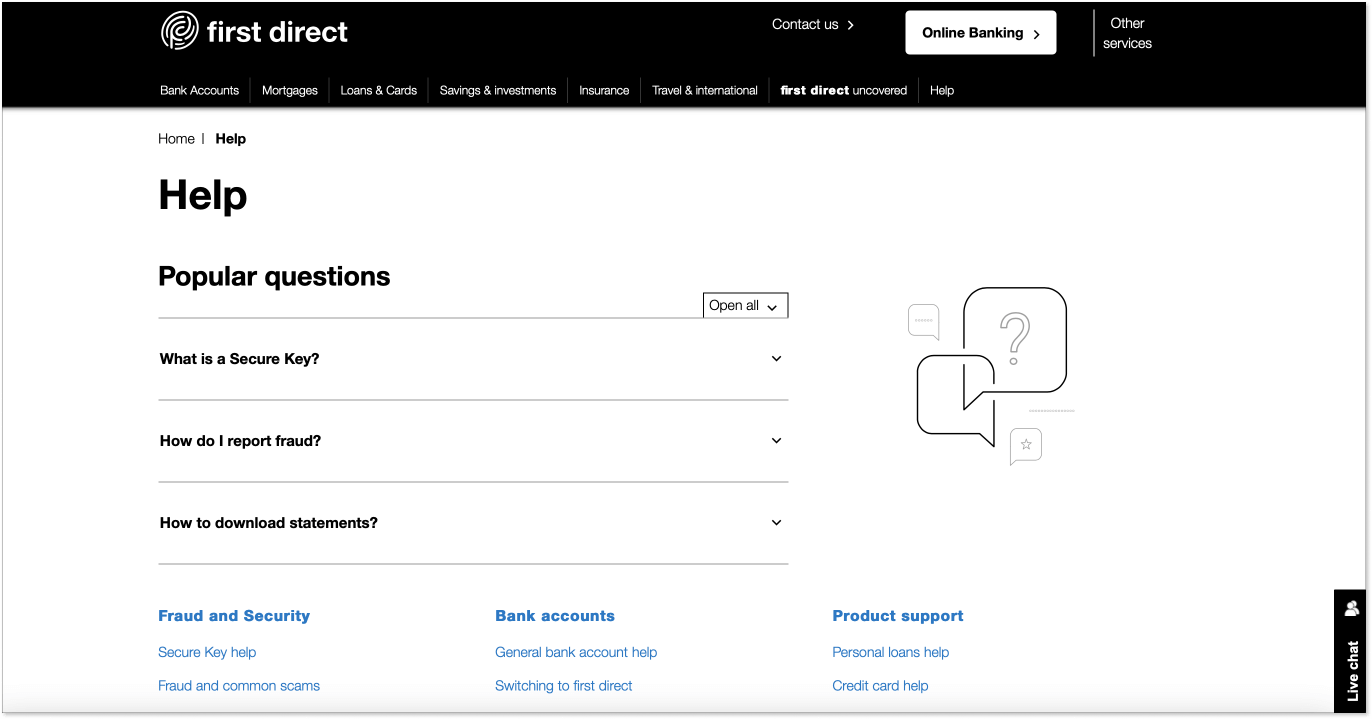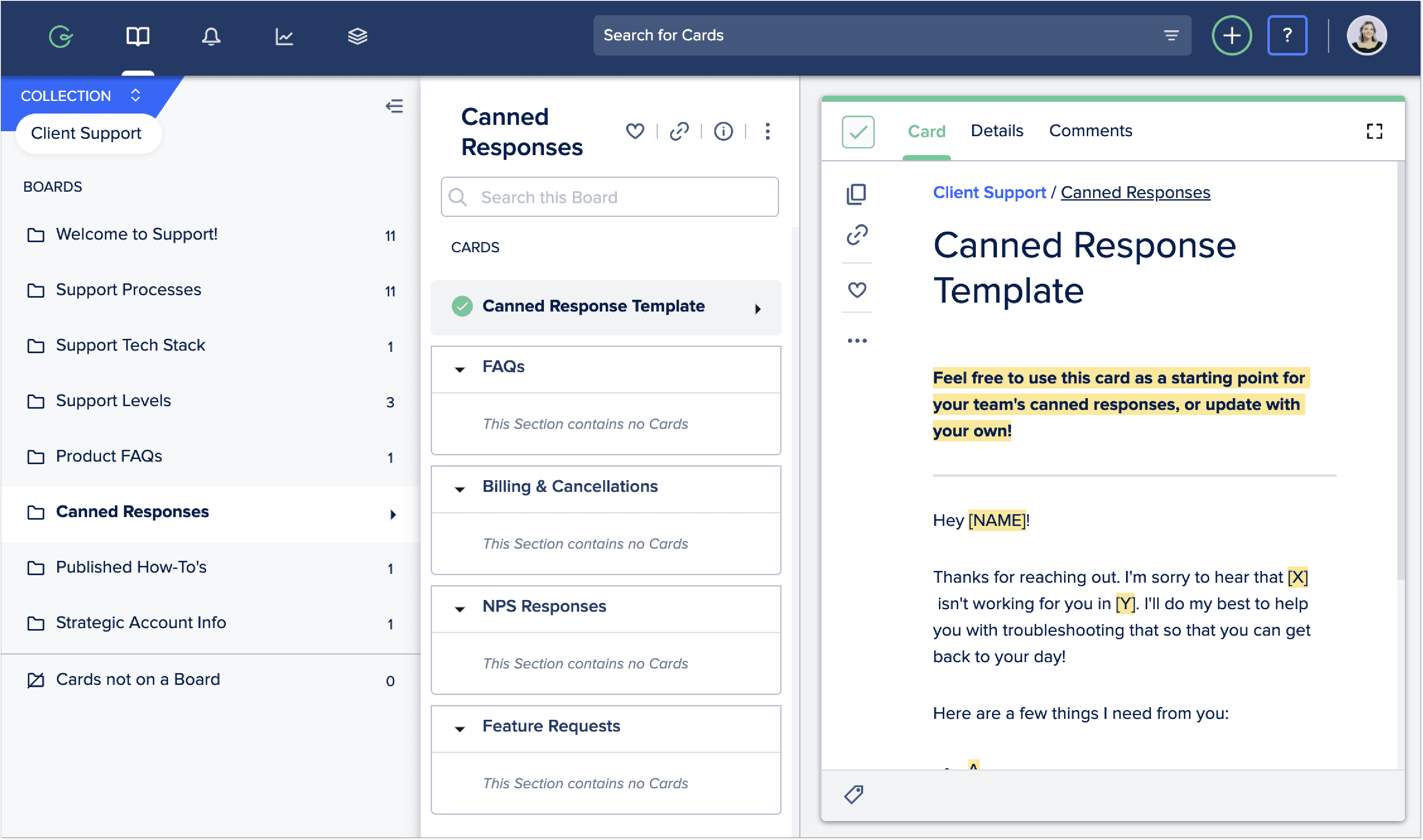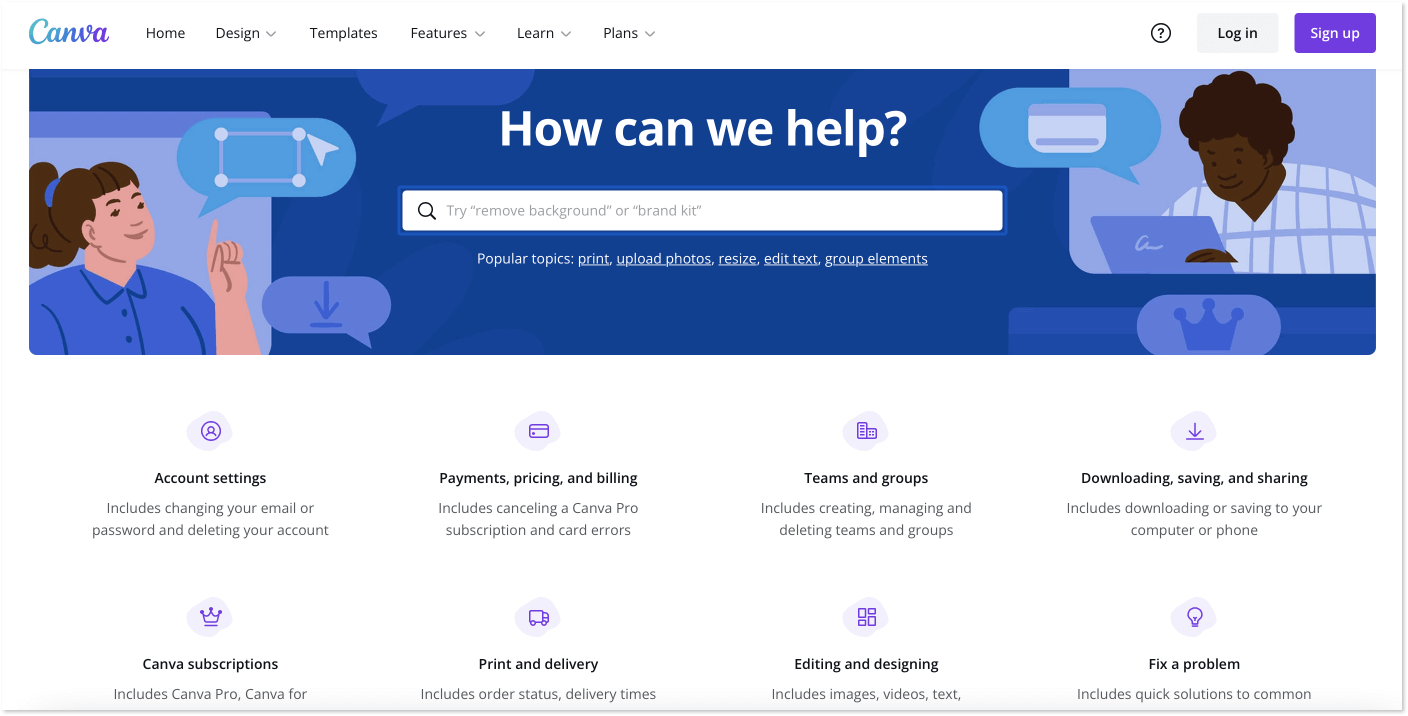FAQ vs Knowledge Base: Unmasking the Key Differences
Learn the difference between the FAQ and the Knowledge Base and find out which one is more powerful!
Written by Tetiana Shataieva

So, you are wading through Google to learn about the tool you are using for business. Some links bring you to regular commercial pages where, to be honest, nothing is clear. Brands just list their benefits and explain nothing.
But other links with a format like ‘help.brandname.com’ lead you precisely to what you were looking for, actionable articles with lots of screenshots.
The latter turns out to be a knowledge base, aka a help center. At the same time, if the link leads to a brief text that directly answers your question, then it might be an FAQ page.
“Aha!” you probably think. “Now it’s clear. The knowledge base is about long articles, while frequently asked questions are quick, direct answers.” But I assure you it’s just the tip of the iceberg. The difference between FAQs and a knowledge base reveals many details and pitfalls. Forward we go!
The difference between FAQs vs. knowledge base (+comparison table)
To show is better than tell. Let’s start immediately with a quick comparison table briefly describing the main differences between knowledge bases and FAQs. And after that, we will dive into the details, use cases, and more.
| FAQ | Knowledge base |
| The main goal is to answer basic questions and lure leads to make a purchase | The main goal is to help new and exciting customers to make the most out of your product or service |
| Quick, direct answers | Comprehensive step-by-step helpful materials |
| FAQ can either be custom-built, or FAQ software can be used for it | A knowledge base is usually built with the help of dedicated software to quickly and conveniently update the information at any time |
| In the case of an FAQ is part of a website, it’s challenging to add new information or update answers as it involves several steps and may even require help from other teammates (just like any webpage update) | Simply add any changes to the knowledge base (just a few clicks in the editor) |
| Usually, not very convenient to use for visitors due to the search difficulties, poor design, and gappy information | User-friendly with design templates, search bar, categories, and full information availability |
| Limited reporting that does not provide information on whether the answers were helpful | Built-in reporting and metrics allow you to see which articles are missing and whether the information helped the user |
Now, let’s go through some of these points that require clarification to understand what differentiates frequently asked questions from a knowledge base and vice versa.
- Separate software
FAQ can be a part of your website or a part of your knowledge base. In the first case scenario, you build it like any other content on your site. But if you want to create this section with the help of a dedicated tool or make it a part of your knowledge base, then pick FAQ software and enjoy easier management.
At the same time, a knowledge base is always created with the help of dedicated software since it is a separate holistic tool for user self-service. A good knowledge base software allows you to create categories, add as many articles as you want, place a search bar, and generate reports on customer satisfaction and failed searches.
- Analytics
It’s not for me to tell you how important it is to evaluate the performance of every tool and product you use. Frequently asked questions built as part of a website can be analyzed only by some software like Google Analytics and Hotjar. They can tell you a lot about how interested customers are in a given page and where they most often click, but they won’t tell you how much your answers help users. Isn’t that the main purpose of creating that page?
On the contrary, FAQ tools and knowledge base software utilize analytics to understand how visitors interact with your content. Some tools offer users to evaluate the usefulness of content in the article. Later, you can monitor which articles perform well and which require improvement.
Besides, you can also see a failed search report. It’s the keywords that customers typed into the search bar and couldn’t find any information on the topic. This is your source of new helpful article ideas.
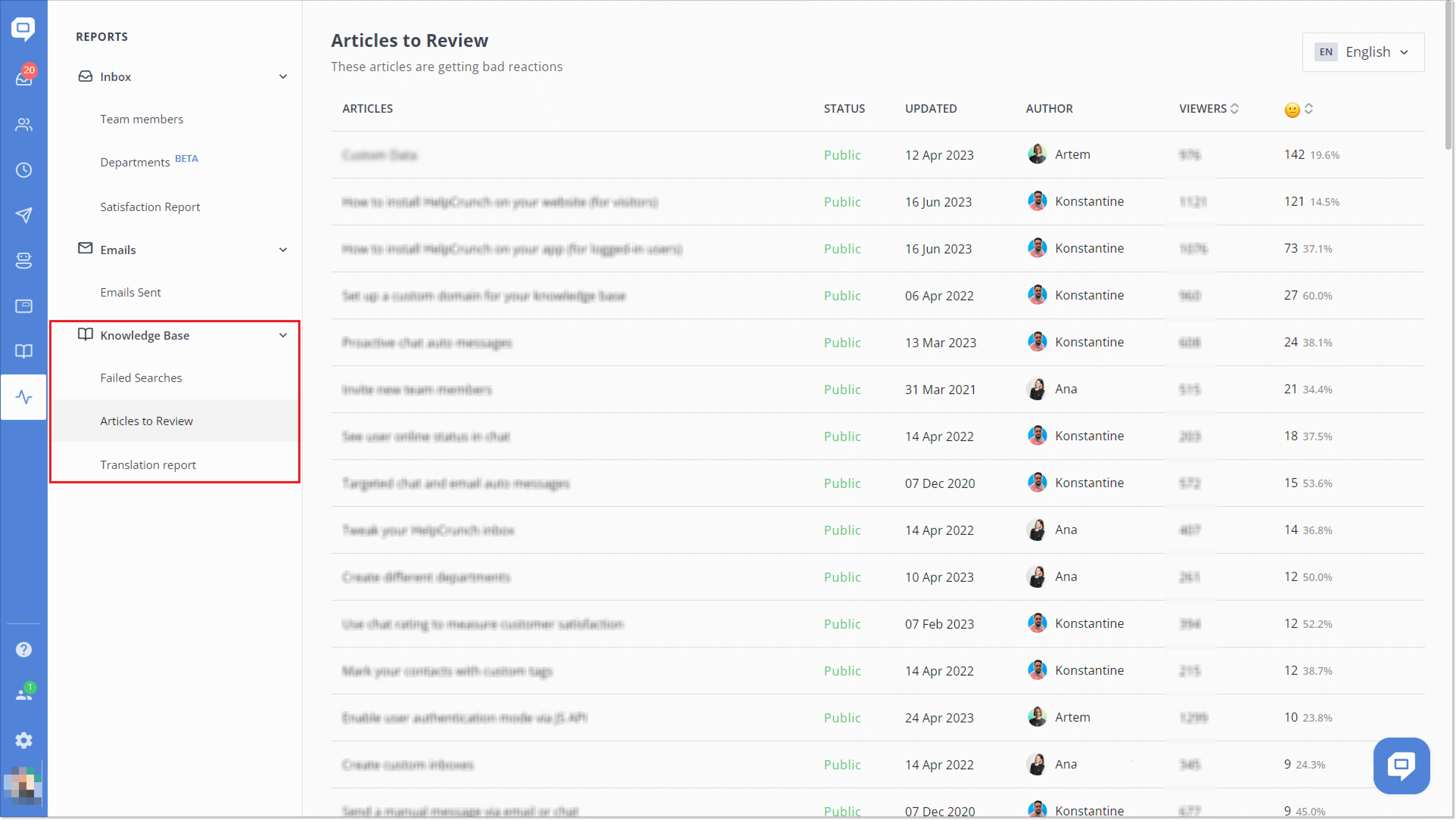
Now, let’s take a closer look at business use cases of the frequently asked questions and knowledge base.
How do businesses use FAQ pages?
FAQ is the first solution that comes to mind when trying to answer the most basic customer questions. You just gather all popular requests and provide short, direct answers.
Usually, this is the source of information for potential customers who are just considering buying your product or service.
There are three main ways businesses use frequently asked questions.
- As part of an existing webpage (usually just above the footer)
Imagine a visitor lands on your website. They scroll through the homepage, click on ‘Pricing,’ scroll again, and see a quick list of questions that unleash all peculiarities of pricing policy at your company. Here is an example of what such an FAQ list can look like.
In other words, this is the way to answer users’ questions before they even pop up in their heads.
- As a separate FAQs page
If you’ve got a lot of customer requests to cover or just want to provide quick answers to the most popular questions separately, you may want to create a dedicated page.
This is a less popular use case today, as its effectiveness brings many concerns. People come to your site to learn more about the product, so they usually click on a ‘Product/Features’ page, but not an FAQ category.
Besides, frequently asked questions are often not user-friendly. Visitors must scroll down or use the ‘Command+F’ shortcut to find the right one. And when they find an answer, the information is usually poorly described in just a couple of sentences, which doesn’t help much.
Many businesses still create separate FAQs to cover basic customer requests. If you also want to make one, structure the topics properly and add a search bar for easier navigation.
- As part of the knowledge base
Yes, one solution doesn’t exclude the other. People need both quick answers to basic questions and detailed explanation articles. Thus, an FAQ can be a central part of your knowledge base.
You can add the most popular questions about your product to the help center. Or, along with brief answers, you can provide comprehensive step-by-step instructions.
See the example below, where frequently asked questions are placed in the center, and more detailed information split by topics is just beneath them.
What’s a knowledge base for?
A knowledge base explains more complex issues that can’t be described in just a few sentences. It represents a single directory of information about your product and how it works.
This type of help page serves the needs of new and existing clients, providing instructions for use.
Yet, it’s not the only way businesses leverage the knowledge base. In general, there are two main use cases.
- For internal use among employees
That’s when a company creates a centralized database with all the information employees might need to do their job right. And it’s quite a good idea to create one since an average employee spends 20% of their time searching for internal or external knowledge.
This document covers company policy, organizational structure, instructional videos, marketing guidelines, etc. There are no rules on what the internal knowledge base should look like and what it has to include. The only advice – make it helpful 🆘
It can bring you many benefits: smoother onboarding, improved productivity, increased employee retention, and a better knowledge transfer process, to name a few.
- For external use among customers
This help center captures information that clients need to properly use a product or service, solve possible issues, and get the most benefits you can offer. Building an external knowledge base is not a question to consider but is necessary to meet clients’ needs.
A well-thought-out knowledge base can streamline the customer support process. First, users can choose to look for information themselves or contact an agent. Second, support representatives can use detailed knowledge base articles to help clients solve their problems quickly.
A good help center includes as much information as possible and leaves no questions unanswered. In addition to being up-to-date and presented, all information should be well organized by topic.
Choosing between FAQs and a knowledge base
If I were a business owner making my choice, I’d create a knowledge base or an FAQ page with the help of dedicated software. It’d allow me to mix repetitive questions and brief answers with educational infographics and videos categorized by topics. In parallel, I would monitor users’ satisfaction, update existing materials and easily add new ones.
If you agree that this is the most effective approach, then you need to decide on software for a knowledge base and FAQs. As a content manager at this company, I full-heartedly recommend the HelpCrunch platform, an awesome tool for customer communication. It includes a live chat, chatbot, knowledge base, and email automation functionality.
The knowledge base is truly one of our team’s best creations. An elementary and easy-to-use program that will delight your customers.
Create, categorize, or update articles in a what-you-see-is-what-you-get editor that enables previews. It takes seconds to provide any changes to the knowledge base to keep it relevant. Moreover, you can easily optimize your content for search engines in the editor.
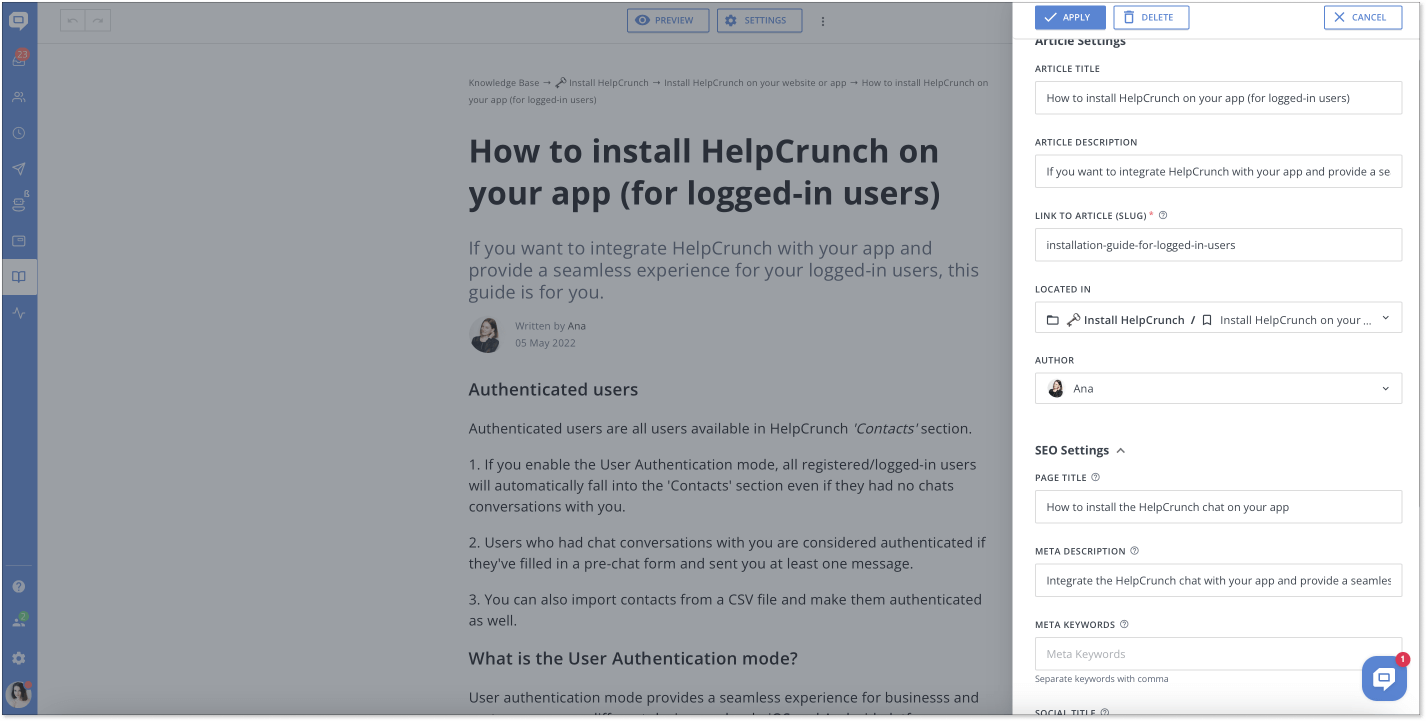
The benefits do not end there; the program allows adding a knowledge base to your chat widget. After all, users need to have quick access to your help center and be able to choose the self-service option instead of communicating with a living person.
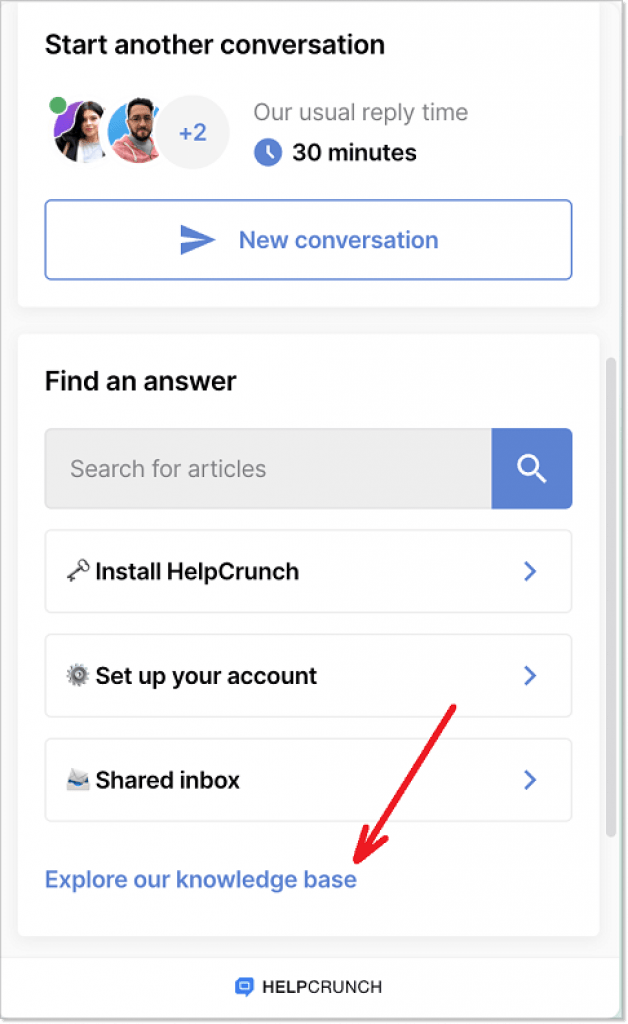
So if you want a great knowledge base that can also become your best friend when communicating with customers through other channels, this is your top choice! For those willing to give it a shot, sign up for a 14-day free trial today and let me know if you like it as much as I do 😃.
Conclusion
In short, an FAQ is a more simplistic solution, focused on brief, direct answers, while the knowledge base tends to explain complex things in detail.
There are other peculiarities. They have different target audiences, tasks, formats, designs, and information architecture. If asked, “Who eventually wins?” I say, “Beautiful design!” Yes, FAQs usually look dull, but it’s up to you to make them nice and pleasing for visitors’ eyes.
The story is the same with the knowledge base. Nicely organized by topics, helpful and relevant information, and an excellent user interface can make your help center the best knowledge hub for users.

